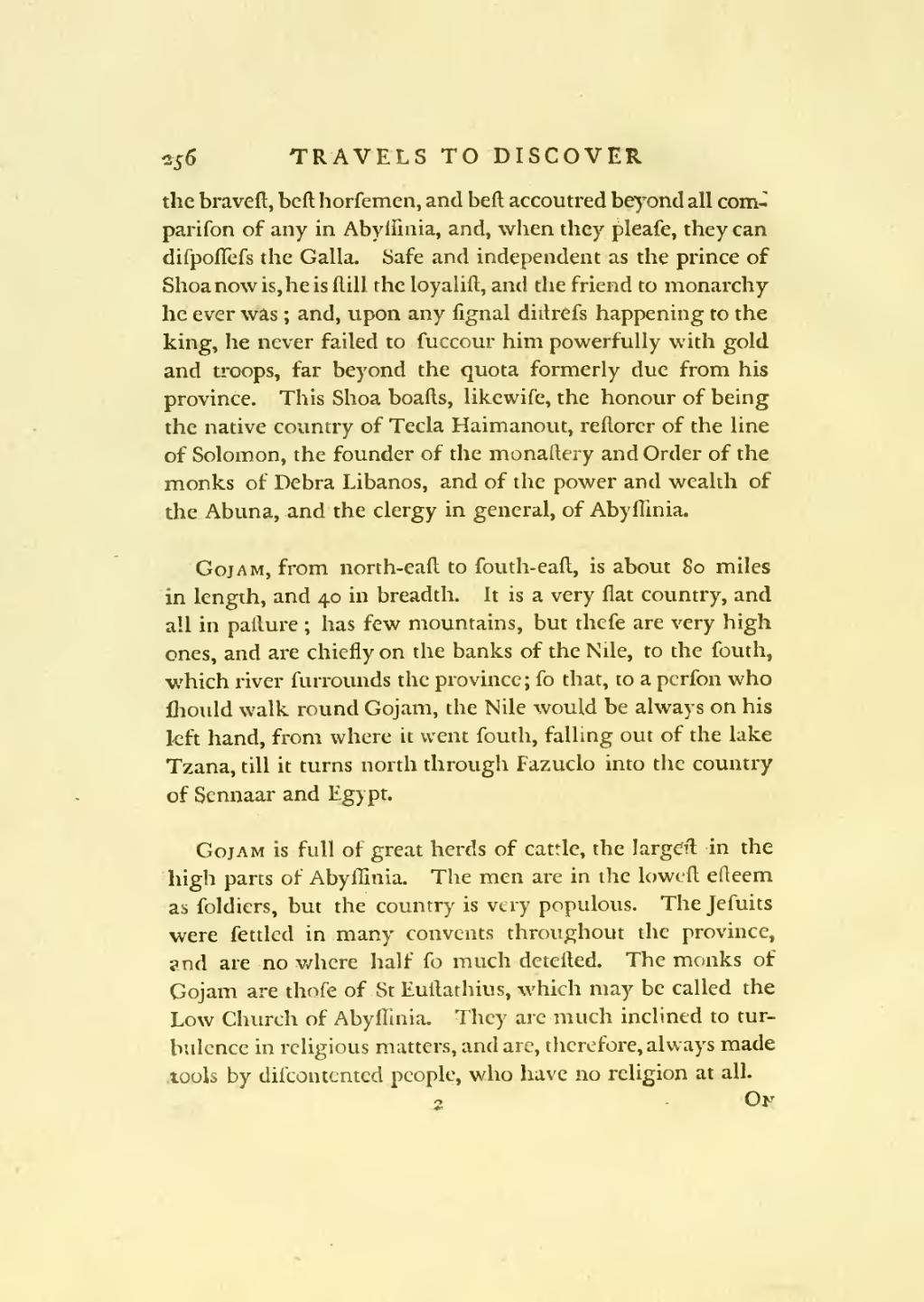the bravest, best horsemen, and best accoutred beyond all comparison of any in Abyssinia, and, when they please, they can dispossess the Galla. Safe and independent as the prince of Shoa now is, he is still the loyalist, and the friend to monarchy he ever was; and, upon any signal distress happening to the king, he never failed to succour him powerfully with gold and troops, far beyond the quota formerly due from his province. This Shoa boasts, likewise, the honour of being the native country of Tecla Haimanout, restorer of the line of Solomon, the founder of the monastery and Order of the monks of Debra Libanos, and of the power and wealth of the Abuna, and the clergy in general, of Abyssinia.
Gojam, from north-east to south-east, is about 80 miles in length, and 40 in breadth. It is a very flat country, and all in pasture; has few mountains, but these are very high ones, and are chiefly on the banks of the Nile, to the south, which river surrounds the province; so that, to a person who should walk round Gojam, the Nile would be always on his left hand, from where it went south, falling out of the lake Tzana, till it turns north through Fazuclo into the country of Sennaar and Egypt.
Gojam is full of great herds of cattle, the largest in the high parts of Abyssinia. The men are in the lowest esteem as soldiers, but the country is very populous. The Jesuits were settled in many convents throughout the province, and are no where half so much detested. The monks of Gojam are those of St Eustathius, which may be called the Low Church of Abyssinia. They are much inclined to turbulence in religious matters, and are, therefore, always made tools by discontented people, who have no religion at all.
On
